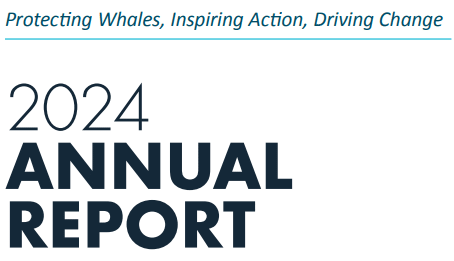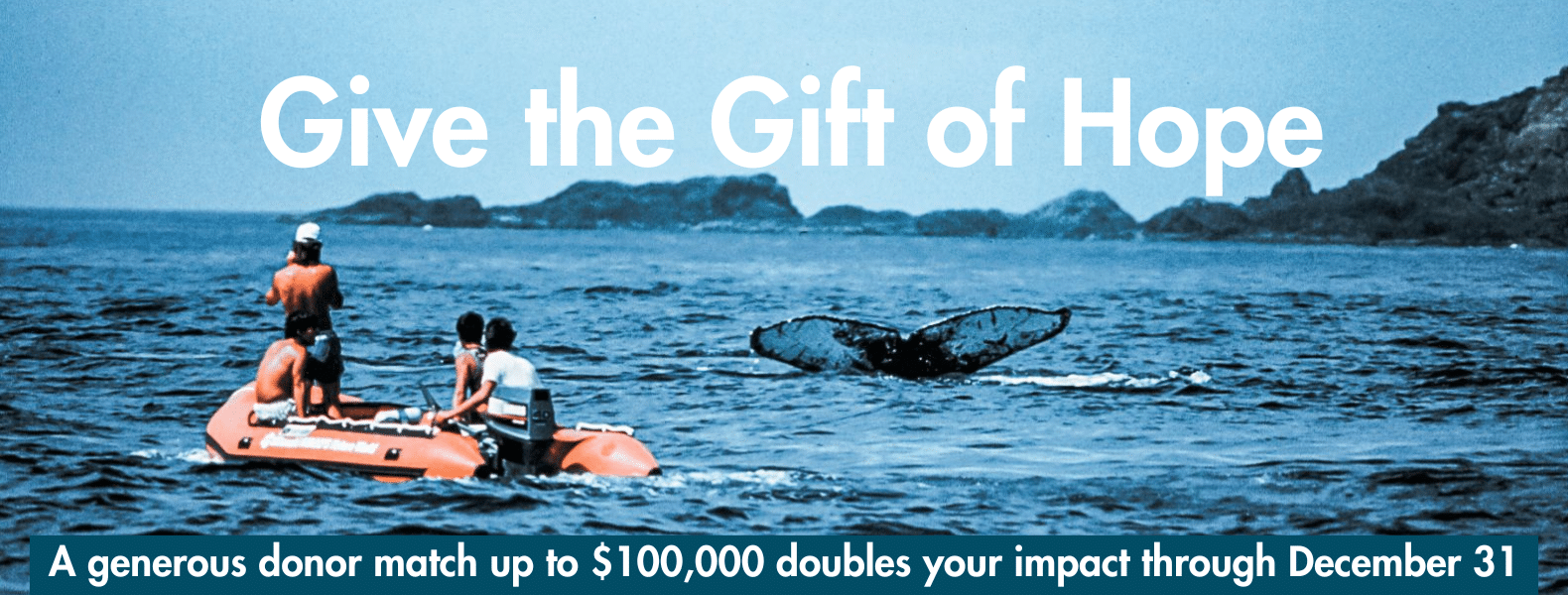At Pacific Whale Foundation, we work to understand the major threats currently impacting the world’s whales and dolphins. Born of battle, we fought to bring the humpback whale back from near-extinction numbers due to commercial whaling and continue working tirelessly to protect them and all cetaceans around the globe. Many threats have emerged in this time of post-whaling recovery. Understanding and addressing these threats directs our research, education and conservation efforts and informs each action taken.
In this article series, we covered the five major threats facing the ocean’s cetaceans today: ocean pollution, tourism pressure, fisheries interactions, climate change and vessel traffic. We conclude this Making Waves series by highlighting PWF’s work in mitigating the stressor caused by ship strikes.
Although our primary focus addressed large container ships colliding with whales, cetaceans located in areas where their habitat overlaps with heavy vessel traffic remain highly vulnerable1. This includes the Hawaiian Island region where large numbers of humpback whales migrate every winter to breed and calve, a clear example of whale habitat and high human use overlap1.

Pacific Whale Foundation has long advocated for mitigation of the stressor caused by ship strikes. Case in point: The Hawaiʻi Superferry, founded in 2003, provided passengers and vehicles inter-island transportation, with the aim of expanding service between all Main Hawaiian Islands. Due to the high speed of this vessel (~34 knots) and the high density of whales in the nearshore areas, PWF and other conservation groups urged the State of Hawaiʻi to require an Environmental Impact Statement (EIS) before service between Maui and Oahu was slated to begin. An EIS would identify issues related to marine life, along with additional concerns such as transport of invasive species and traffic congestion. In 2007, the state legislature passed a law allowing the Superferry to offer service between Honolulu, Oahu and Kahului, Maui while the EIS was being conducted. In March 2009, the State Supreme Court ruled that law unconstitutional and the Superferry operation ceased.

More recently, some of Pacific Whale Foundation research has focused on how to best mitigate the threat of collision. One of our studies covered nearly 800 square kilometers within the four-island region of Maui, which covers a large section of the Hawaiian Island Humpback Whale National Marine Sanctuary (HIHWNMS) and represents a heavily trafficked area during the annual whale-watching season between December and April1. The study found that a reduction in speed may help prevent whale-vessel collisions, as there was a threefold reduction in initial encounter distances when vessel speeds were reduced to 12.5 knots or less1. This research has been implemented into the operations of the wholly owned subsidiary of PWF, PacWhale Eco-Adventures, which operates in the Maui Nui region throughout the year.
Of course, PacWhale Eco-Adventures vessels are not the only operators on Maui Nui waters, and as such, PWF promotes voluntary guidelines to help other operators avoid ship strikes (Be Whale Aware) and has been advocating for the adoption of additional voluntary guidelines within the Sanctuary.

This relationship is precisely how PWF defines our conservation work — where the science stops and the action starts. We seek to apply our published research findings to further protect whales and dolphins through stricter management efforts.
NOAA’s Hawaiian Island Humpback Whale National Marine Sanctuary (HIHWNMS) has a mission to protect Hawai’i’s humpback whales and their habitat through education, research, and resource protection efforts4. Working with the community and other partners, the HIHWNMS aims to reduce threats to humpback whales through various mitigation strategies, such as on-water enforcement4. In 1996, the Sanctuary Advisory Council (SAC) was established to advise the sanctuary superintendent on operations and serve as liaisons to members of the community4. PWF Chief Scientist Jens Currie, a contributing member of the SAC, serves as the Research chair and provides input related to our collective mission to reduce threats to humpback whales and their habitat. Through this avenue, Currie has been working to share our research on vessel speeds and the benefits of additional approach guidelines as they relate to whale collisions and harassment5 with the goal of adopting additional voluntary guidelines.

PWF not only conducts research and advocacy work to protect the health of the ocean, but we also educate our supporters on ways they can contribute to the mitigation of these identified threats. Regarding the stressor caused by ship strikes, actions to support solutions may seem out of reach for individuals. However, the best way to get involved in alleviating this threat is to be aware of it. When opportunities arise for public involvement in decision-making, whether that is speed limit reductions on the water or supporting alternate shipping lanes, speak up! One way you can use your voice is by getting involved in local and national legislation addressing these threats. The Ocean-Based Climate Solutions Act of 2021 (H.R. 8632) is national legislation that would provide ocean-based climate solutions to reduce carbon emissions and global warming, as well as provide for the conservation and restoration of ocean habitats, including protections for marine mammals. This bill would designate areas of importance to marine mammals and establish mandatory vessel speed limits of 10 knots for all vessels 49 feet or longer. PWF will continue to advocate for this, and any other legislation, that supports marine mammal and ocean health.
Finally, you can support organizations like PWF; we will always be a voice for the whales. By supporting us, you are supporting a healthier ocean.
Sources
- Currie, J.J, S.H. Stack, Kaufman, G.D. (2017) Modeling whale-vessel encounters: the role of speed in mitigating collisions with humpback whales (Megaptera novaeangliae). Journal of Cetacean Research and Management 17: 57–63.
2. Hawaii Tourism Authority 2019 Annual Report
3. Brouder, P., Teoh, S., B. Salazar, N., Mostafanezhad, M., Mei Pung, J., Lapointe, D., Higgins Desbiolles, F., Haywood, M., Hall, M.C., & Balslev Clausen, H., (2020): Reflections and discussions: tourism matters in the new normal post COVID-19, Tourism Geographies, DOI: 10.1080/14616688.2020.1770325
4. NOAA National Marine Sanctuaries
5. Currie, J., McCordic, J., Olson, G., Machernis, A. and Stack, S., (2021) The Impact of Vessels on Humpback Whale Behavior: The Benefit of Added Whale Watching Guidelines. Frontiers in Marine Science, 8.

